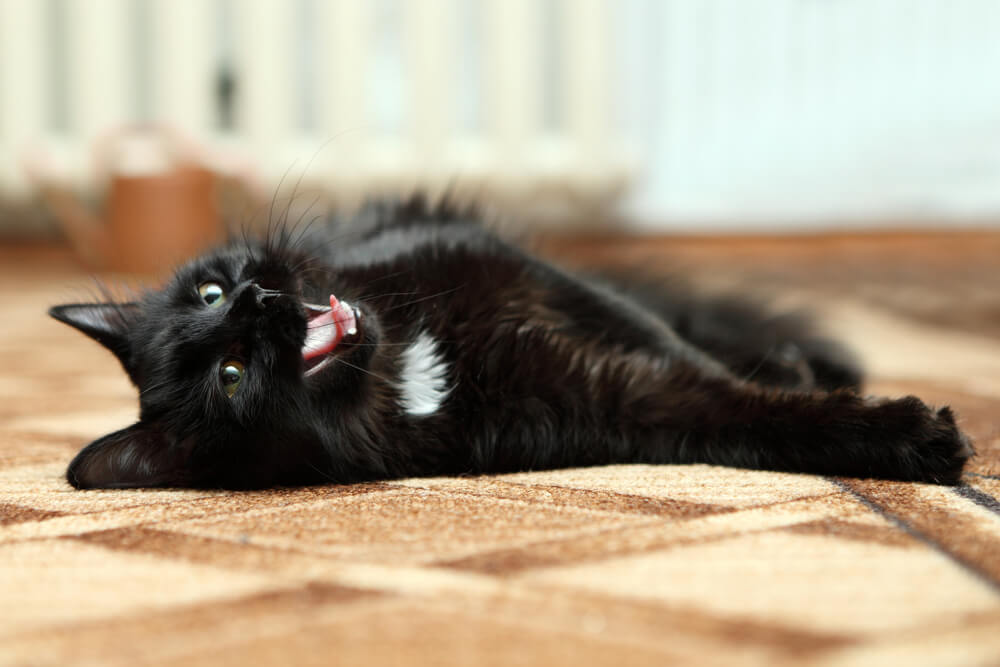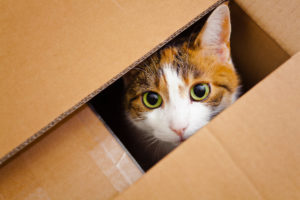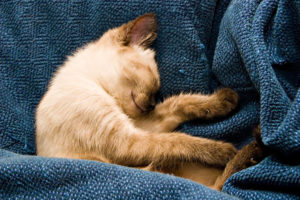how long are cats in heat is very perceptive when they go into heat, the heat can last from anywhere between 2 to 7 days
It is a common fallacy that cats are in heat for 3 weeks each month. In truth, cats can retain their ova from anywhere between seven to ten days, but only about three of those days the cat will go into heat and be receptive to copulation by males.
The three most prominent symptoms of when cats are in heat include increased vocalization, restlessness, and erratic behavior.
The first step to take when you suspect that your cat is on her way into heat is to know what the different signs are so you can accurately identify them rather than assuming she’s on her way into- or already in -heat.
Here are some of the most common symptoms that may indicate that your cat is in heat.
Urine marking: Female cats will often urine marks more frequently when they are in heat. This is because the act of urinating helps to send chemical messages out into her environment that let other cats know that she is ready to mate.
Vocalization: Cats in heat tend to vocalize more than usual. This is especially true if one or more other cats are present in the home and she’s trying to communicate with them.
Meowing: Cats also meow more frequently when they’re on their way into heat. The noises can often sound like distressed mewing rather than normal habits such as purring or the occasional hiss/growl.
Restlessness: Cats in heat tend to be a lot more restless than normal. They may pace around the room or seek out other places, such as your bed or couch, that they don’t normally go.
Intermittent affection: Another common sign of cats being on their way into heat is the occasional show of affection from them. Cats may try to cuddle with you or show other signs of affection, even if it’s not a regular occurrence.
Mosquitoes: One last sign that is a byproduct of a cat being on their way into heat rather than an actual indication of the status itself is the occasional mosquito bite. These bites tend to be more common if there are outdoor cats in the home that go into heat.
If you’re uncertain about whether or not your cat is on her way into heat, it’s best to err on the side of caution and keep an eye out for the symptoms listed above. After all, if you can’t pinpoint when your cat is going into heat there’s more of a chance that the heat cycle will go unnoticed… which it shouldn’t because if you don’t mate your pet, you risk her developing pyometra.
How do you stop a cat in heat from meowing?
As we understand it, cats in heat can be very vocal. This is due to the hormones that are being produced by the ovaries. As you probably already know, these hormones are being produced in ever-increasing quantities, which results in your cat becoming more and more restless – both physically and emotionally.
The primary hormone that causes this condition in felines is estrogen. This is often referred to as the ‘female’ sex hormone, though it’s also present in males in small quantities.
These hormones are what cause your cat to become restless when they go into heat – among other things! They tend to make the animal feel very uncomfortable, particularly in terms of their reproductive cycle.
Why isn’t my cat in heat?
This is a question that most pet owners ask themselves, usually after six to nine months of living with their feline friend.
The answer? She simply may not be ready yet!
Kittens are typically able to reproduce once they reach the age of maturity (between 6 and 12 months). It’s, therefore, possible that you adopted your cat before this stage of her life. More likely than not, you’ll notice the first signs of puberty within those first few months.
What would happen if my cat mated with another cat?
If your pet became pregnant as a result of mating, there’s a risk that she could develop pyometra. This is a condition in felines where the cat’s uterus fills with pus.
This life-threatening condition is fairly common in cats that are not spayed, and it’s the leading cause of death among cats that have not undergone this procedure (i.e., canines). It can also become fatal if pyometra-related complications set in during the pregnancy.
Fortunately, most veterinarians are able to treat this condition with relative ease. It involves removing the uterus of the cat, which is not something that many pet owners would want to think about.
On the whole, pyometra should be considered a serious problem in un-neutered felines. If you own an un-spayed feline and notice that her nipples are becoming enlarged or that she’s clucking, then you need to get her checked out right away.
If my cat is in heat can I mate her with a tom cat?
This is important because the answer has a direct impact on your pet’s health and well-being.
For cats that have not been spayed, mating can present a serious health risk. This is because the female’s reproductive system hasn’t been altered in any way. If it goes unnoticed during her heat cycle, she may develop pyometra.
As already mentioned, this condition is dangerous and potentially fatal for your pet. If you think about it, a cat in heat will most likely crave the attention of a tomcat. It’s therefore not uncommon for unplanned pregnancies to occur if owners fail to mate their pet with another feline.
Does catnip help cats in heat?
The short answer is yes. It helps to calm the female feline down and allows her to rest. The reason behind this has less to do with catnip being a sedative and more to do with it being an effective distraction from all of that tomcat attention!
In other words, when your pet starts behaving in a way that suggests that she’s in heat, you’ll typically notice increase inactivity. This is because she wants to attract the attention of a tomcat. But when she starts chewing on some catnip, it not only helps her to relax (which is what most pet owners want) but also acts as a distraction.
This is why so many veterinarians recommend catnip to pet owners who are going through a particularly difficult time with their feline friends. It’s not a medical treatment by any means, but it can certainly help to reduce the number of cries and meows that your pet produces at home.
In addition, the presence of catnip in your home could do wonders for your feline friend. She’ll no longer act crazy around her home, and she’ll even be more likely to return to her ‘happy place’ (i.e., the litter box).
Should I pet my cat when she is in heat?
To answer this question, you need to consider the nature of cat heat.
Cats in heat typically become very excited. When they feel that it’s time for mating, they will meow loudly and walk around the home with their tail up in the air (this is called ‘flagging’). They may even roll on their backs or rub their bodies against a number of objects throughout the home.
When your pet is going through this, she may become aggressive or stressed. This is why it can be a good idea to limit her interactions with other felines and dogs during this time. If you don’t, then they may also begin producing meows and cries as well as actively attempting to interact with your pet.
When you notice that your cat is in heat, it’s important to limit her physical interactions with other felines and/or dogs for the sake of everyone involved. This is why some veterinarians recommend that you keep your pet in a safe area during these times (i.e., not at home).
Does it cost more to spay a cat in heat?
The short answer is no. Spaying your pet during heat does not cost more than performing this type of surgery on an animal that isn’t in heat. This is because it takes just as long to do and there’s no reason to charge you more money for the privilege.
Unfortunately, many vets tend to charge extra fees when they can get away with it, and this is why you need to ask about these types of price increases prior to the surgery. If possible, make sure that the vet promises not to charge you any more than they normally would for a spay or neuter surgery.
When should I get my cat spayed?
As we’ve already mentioned, your pet will typically need to be at least six months of age before you can have this type of surgery performed. This is because her reproductive system hasn’t been altered in any manner, and it’s best to wait until she has matured a little bit more before the procedure.
In most cases, your pet will need to be at least six months old before you can have her spayed. In the meantime, you’ll need to think about how you’re going to control her heat cycle. Usually, this is done with a combination of catnip and physical confinement in a safe area away from other animals that may want to mate with her.
Is spaying a cat in heat painful?
The answer to this question is a little complicated.
In most cases, veterinarians will use some sort of anesthetic on their feline patients so that they do not feel any pain during the procedure. This is just as effective in cats going through heat as it is for those who aren’t going through this time of the year.
Furthermore, your vet will usually give you some sort of painkiller to give your pet once she is sent home. This can reduce the discomfort that your pet experiences for a short time, and it may make her feel more comfortable in general.
is it different with indoor cats?
The answer to this question will depend on the individual cat.
Some felines tend to act out more often when they are in heat than others, so it can be harder for you to control their behavior. For this reason, many vets recommend those pet owners who have problems with their pets acting up during heat keep them indoors or confine them to a small space.
This is because when cats go through heat, they will want to become very active and aggressive towards other animals and humans around them. The best way to stop this from occurring is oftentimes to limit their physical interactions to just one or two people who can be trusted.
Is there a breeding season?
To answer this question, it’s important to understand what heat actually is. Heat is the time of the year when cats are able to become pregnant and reproduce with other felines.
Therefore, there is no “breeding season” for cats because they’re always capable of reproducing at any point in their lives. The only thing that changes during certain times of the year is their heat cycle.





